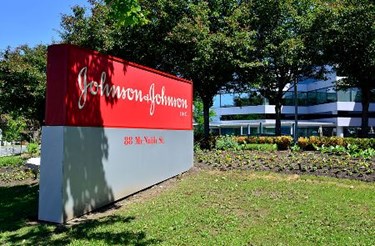J&J Gains Momentum In Med Devices, Remains 'Disciplined' With Acquisitions
By Jof Enriquez,
Follow me on Twitter @jofenriq

Johnson & Johnson (J&J) is regaining momentum in medical devices, with several categories exceeding expectations in the first quarter. Also, the company is open to executing more M&A deals, but will do so with a "disciplined" approach.
Last year's revenues of J&J's medical device business, the largest in the industry, fell 8.7 percent to $25.1 billion, and the business has underperformed compared to J&J's pharmaceutical and consumer products divisions. That prompted the company to initiate a restructuring earlier this year, including a funding re-alignment to focus on high-growth devices. The decision to double down on these product areas is starting to have a positive impact.
The company reported that, for the first quarter of 2016, its Worldwide Medical Devices segment sales grew by 0.5 percent to $6.1 billion. United States sales increased 2.2 percent, while sales outside the U.S. decreased 1 percent. Excluding the net impact of acquisitions and divestitures, underlying operational sales growth was 3 percent worldwide, with the U.S. expanding 3.3 percent, and outside U.S. expanding 2.8 percent, driven by orthopedics, advanced surgery, and electrophysiology. The hospital-focused Medical Device sub-segment posted 4 percent growth.
"We are off to a strong start to the year, supported by our 1st-quarter underlying sales growth," said J&J CEO Alex Gorsky in a press release. "Our pharmaceuticals business continues to deliver impressive levels of growth, we have steady improvement in our consumer business, and we are seeing momentum in our medical devices businesses, all of which are fueling our optimism for the full year ahead."
During the first quarter, the primary contributors to operational sales growth in the device business were: electrophysiology products in the Cardiovascular business; joint reconstruction products in the Orthopedics business; endocutters, energy, and biosurgical products in the Advanced Surgery business; and international ACUVUE contact lenses in the Vision Care business, according to the release.
Aside from a robust pipeline of 30 new products – half of which already have launched – the strategy to prioritize certain device categories is a reason for the improvement in the performance of the medical device business, according to company executives.
"I think it's also a matter of focus, focus on the primary growth drivers. For example, you saw very good results in energy, in endocutters, in electrophysiology as major drivers of growth. And also we're very pleased with the results in orthopedics. And the ATTUNE Knee, for example, in the U.S. in particular, the U.S. growth was over 8 percent for knees, which is pretty fantastic growth, and the ATTUNE knee is still a new product that's being launched in that marketplace," Dominic J. Caruso, J&J CFO, told analysts in an earnings call.
"We're pleased to see our Medical Device businesses showing continued signs of improvement, and our restructuring activities in that business are on track," said Caruso, who added that the company will talk more in more detail during the company's upcoming Investor Day on May 18.
As for recent deals, J&J bought NeuWave Medical in March to broaden its surgical oncology portfolio. The acquisition of NeuWave is in line with Gorsky’s plans to execute straightforward, smaller, tuck-in deals, rather than big ones, despite a cash balance reaching $37.3 billion at the end of 2015. Caruso said the priority is to use the capital for dividends and share buybacks, but that the company is evaluating M&A opportunities. Certain valuations of medical device companies remain inflated, though, which makes deal-making tougher.
"With respect to not allocating capital to any particular deals, I could tell you that we're very active, but as you know, we're also very disciplined. We do see opportunities, but we want to do the right deal at the right time with the right party at the right valuation. And we're comfortable waiting for that to take place because we think that's what ultimately generates the most value for shareholders," Caruso told analysts.
